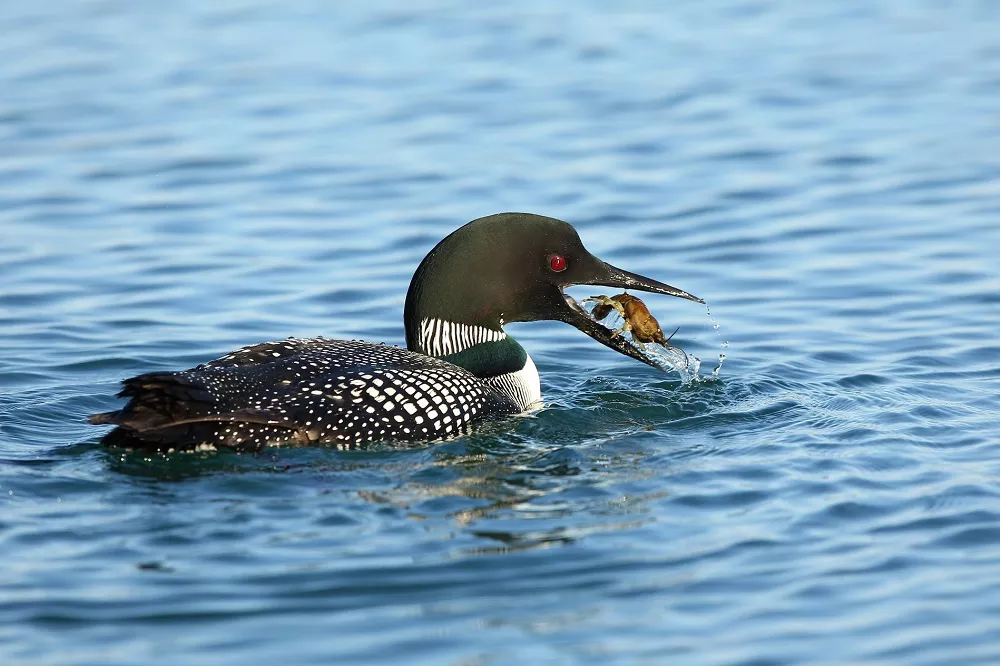The national bird of Canada is the common loon, also known as the Great Northern Diver. This beautiful bird is a symbol of the country’s wilderness and is an important part of Canada’s cultural identity.
The common loon is a large, aquatic bird that measures about 28 to 36 inches in length and has a wingspan of 4 to 5 feet. It has a distinctive black-and-white checkered plumage, with a black head, neck, and back, and white underparts. Its wings are black with white markings, and its tail is short and square. Its eyes are a bright red color, which is thought to be an adaptation for seeing underwater.
The common loon’s beak is long, straight, and pointed, and is adapted for catching fish, which make up the majority of its diet. The bird’s legs are set far back on its body, which makes it an excellent swimmer but makes walking on land awkward.
The common loon is known for its haunting, mournful call, which can be heard echoing across lakes and rivers in Canada’s northern wilderness. This call is often used in films and television shows as a symbol of the Canadian wilderness.
The common loon is found throughout Canada and is a migratory bird, spending its winters in coastal waters or on the open ocean. In the summer, it breeds on freshwater lakes and ponds in Canada’s northern regions. The bird’s nesting habits are also noteworthy, as it typically builds its nest on the ground near the water’s edge and may use the same nest site for several years in a row. It feeds on fish, insects, and crustaceans, diving underwater for up to a minute at a time to catch its prey.
The common loon is an important part of Canada’s cultural identity, and its image has been featured on Canadian coins, stamps, and even the country’s $1 bill. The bird’s association with wilderness and the northern regions of Canada has made it a symbol of national pride and a beloved emblem of the country’s natural heritage.
In conclusion, the common loon is the national bird of Canada and is an important symbol of the country’s wilderness and cultural identity. Its haunting call, distinctive plumage, and association with northern regions have made it a beloved emblem of Canada’s natural heritage.
Related topics:


 Facebook
Facebook  Instagram
Instagram  Youtube
Youtube 